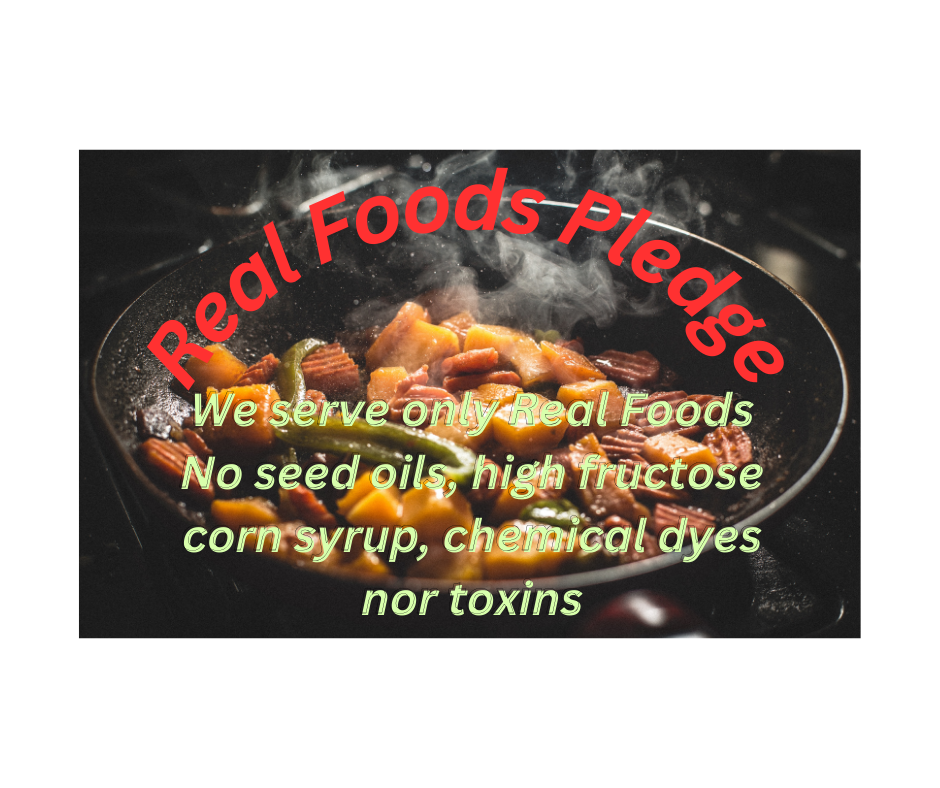A “Real Foods Pledge” could be a powerful marketing hook for your restaurant, tapping into growing consumer demand for clean, transparent eating. By promising no seed oils (like canola, soybean, peanut, etc. linked to inflammation), toxic food dyes (e.g., Red 40, tied to health concerns), or high fructose corn syrup (a sweetener blamed for obesity), the pledge positions the restaurant as a haven for health-conscious diners. It’s a bold stand against processed junk, spotlighting fresh, whole ingredients—think olive oil, natural spices, and cane sugar instead.
In a 2024 survey by the International Food Information Council, 63% of Americans said they’d pay more for “clean label” food, and posts on X regularly hype eateries ditching industrial additives. Marketing could lean into this with a catchy tagline—“Pure Plates, No Fakes”—and visuals of vibrant, untainted dishes. The pledge could splash across menus, signage, and social media, with a QR code linking to a breakdown: “No seed oils (heart-friendly fats only), no dyes (colors from nature), no HFCS (real sweetness).” Staff could pitch it tableside, framing it as a promise, not a gimmick—building trust with skeptics wary of Big Food’s reach. It’d draw fitness buffs, parents dodging kid-targeted junk, and the wellness crowd, especially in Florida’s health-savvy markets like Lehigh Acres. Pair it with local sourcing (e.g., citrus from nearby groves), and it’s a story: food that’s real, rooted, and safe. Risks—like higher costs or supply hiccups—fade against the payoff: loyalists who’ll pay a premium for peace of mind. In a sea of fast-casual sameness, this pledge screams authenticity, turning a restaurateur’s savvy into a fresh draw—health sells loud.

